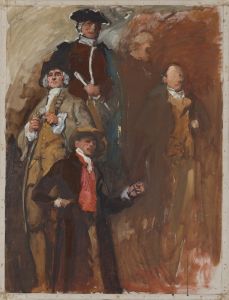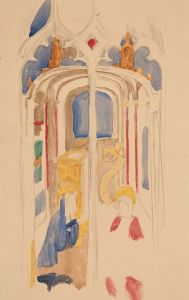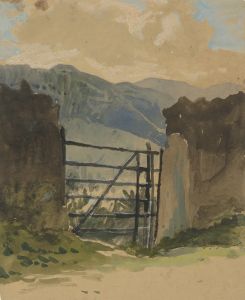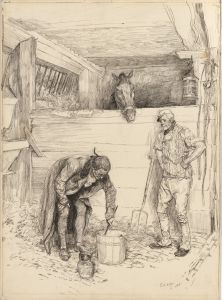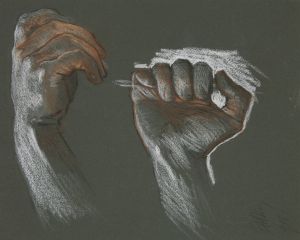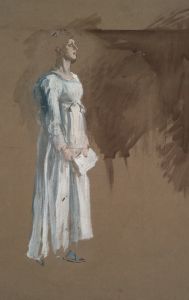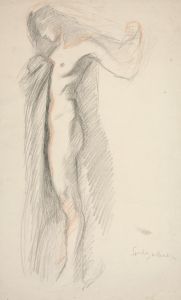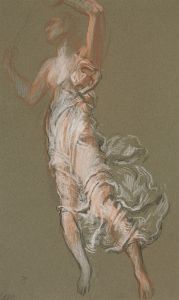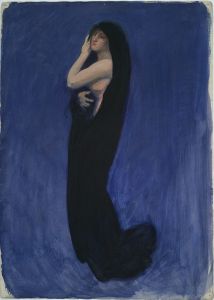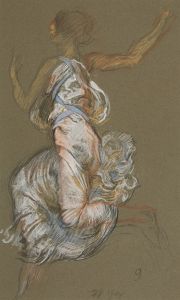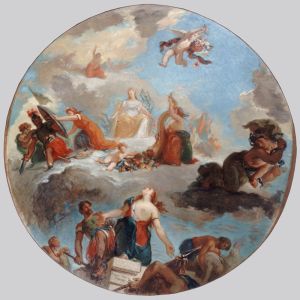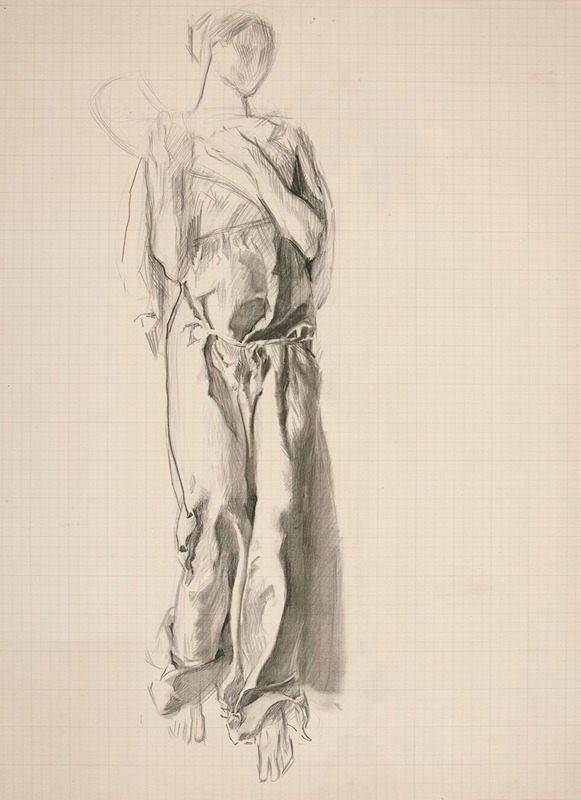
Study for figure of Abundance in the mural, Science Revealing the Treasures of the Earth, at the State Capitol building in Harrisburg, Pennsylvania
A hand-painted replica of Edwin Austin Abbey’s masterpiece Study for figure of Abundance in the mural, Science Revealing the Treasures of the Earth, at the State Capitol building in Harrisburg, Pennsylvania, meticulously crafted by professional artists to capture the true essence of the original. Each piece is created with museum-quality canvas and rare mineral pigments, carefully painted by experienced artists with delicate brushstrokes and rich, layered colors to perfectly recreate the texture of the original artwork. Unlike machine-printed reproductions, this hand-painted version brings the painting to life, infused with the artist’s emotions and skill in every stroke. Whether for personal collection or home decoration, it instantly elevates the artistic atmosphere of any space.
Edwin Austin Abbey, an American muralist and illustrator, was commissioned to create a series of murals for the Pennsylvania State Capitol in Harrisburg. Among these works is the mural titled "Science Revealing the Treasures of the Earth," which features a study known as "Study for Figure of Abundance." Abbey, renowned for his historical and literary illustrations, was tasked with decorating the Capitol's interior, a project that became one of his most significant artistic endeavors.
"Science Revealing the Treasures of the Earth" is part of a larger mural cycle that Abbey designed to adorn the walls of the Pennsylvania State Capitol. This particular mural is located in the Rotunda, a central and prominent space within the Capitol building. Abbey's murals were intended to reflect the themes of knowledge, progress, and the rich resources of Pennsylvania, aligning with the state's identity and aspirations at the turn of the 20th century.
The "Study for Figure of Abundance" is a preparatory work for the larger mural. In this study, Abbey explored the depiction of abundance, a common allegorical figure in art that symbolizes prosperity, fertility, and the bountiful gifts of nature. The figure of Abundance is typically represented as a woman, often accompanied by symbols such as cornucopias, fruits, and other elements that signify plenty and wealth. Abbey's study would have involved detailed sketches and possibly smaller-scale paintings to refine the composition, pose, and attributes of the figure before executing the final mural.
Abbey's work on the Pennsylvania State Capitol murals began in the early 1900s, a period when mural painting was experiencing a revival in the United States. This resurgence was partly due to the influence of the Beaux-Arts movement, which emphasized grandeur and classical themes in public architecture and art. Abbey, who had established a successful career in England as well as the United States, was well-suited to this style, bringing a blend of historical accuracy and imaginative composition to his work.
The murals, including "Science Revealing the Treasures of the Earth," were completed over several years, with Abbey dedicating a significant portion of his later career to this monumental project. Unfortunately, Abbey passed away in 1911 before he could see the full completion of his work at the Capitol. His contributions, however, left a lasting legacy, and the murals remain an integral part of the Capitol's artistic and cultural heritage.
Abbey's murals, including the study for the figure of Abundance, are celebrated for their intricate detail, vibrant colors, and the way they encapsulate the spirit of their time. They serve not only as decorative elements but also as educational tools, illustrating the values and achievements of Pennsylvania. Today, visitors to the Pennsylvania State Capitol can view Abbey's murals and appreciate the skill and vision that went into their creation, reflecting a period of optimism and growth in American history.





